Keeping The Hermit Crab As A Pet
Posted On 05 Oct 2021
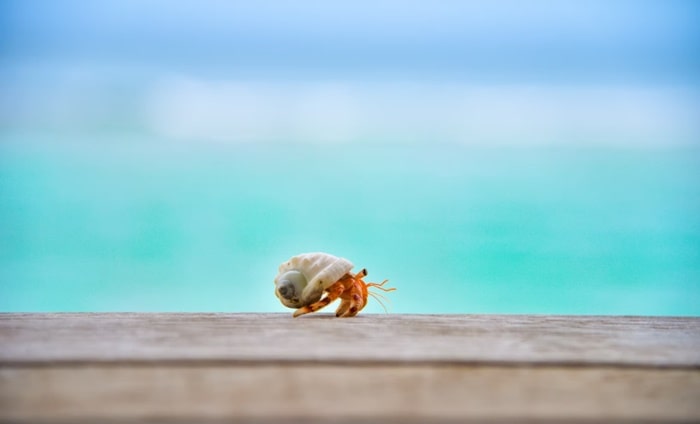
The lovable hermit crab is now gaining popularity as a pet all over the world.
And with very good reasons: they are cute; they are great acrobats; you can take them out of their tank and play with them; you can hand feed them and watch as they change shells. Maintenance is easy once you know the basics and it is inexpensive. Some hermit crabs can chirp too.
There are about 500 species of hermit crabs known in the world. They are mainly marine species that live in the sea. But about 15 of them are able to live on land. They are the terrestrial or LAND hermit crabs, with names starting with Coenobita.
One species: Coenobita rugusos is currently not listed as a threatened or an endangered species in the Convention On International Trade in Endangered Species of Wild Fauna and Flora (CITES).
Coenobita rugosus can be found naturally in the Indo-Pacific region. The AVA has evaluated this species for keeping as a pet and Singapore pet shops with the correctset-up tank and a good knowledge of the species are now allowed to sell it.
Contrary to its name, the Hermit Crab is neither a hermit nor a crab. A hermit lives in isolation but hermit crabs live in colonies of over 100 in the wild. It is actually a very social animal and to successfully keep hermit crabs as a pet, two is company; three or more is better company. Pet shops love to hear this. It is not related to the crab family and the only likeness to the crab is that it has claws that can nip when mishandled.
But don’t let that worry you. Hamsters and rabbits bite too if mishandled. A properly cared hermit crab can be trained to run on the palm of your hand, climb up your shirt, run over your shoulders; scurry all over your room; fight over shells, change shells, like you test shirts to get the best fit. The shell is NOT part of the hermit crab. It is just a temporary house, found, borrowed or stolen. They outgrow the shells and have to seek new ones. Just like you have to change to bigger shirts as you grow.
If you see painted shells, it is just the work of someone trying to be creative. Not what nature intended it to be. The hermit crabs seek shelter in empty sea shells designed and pigmented by nature. There is an ongoing argument whether painting of shells is necessary; some claim that the paint may be toxic to the hermit crabs.
With such antics, it is no wonder that more people around the world are keeping them as pets. Hermit crabs are found in most parts of the world in the sea or on land. They have 2 pairs of antennae and 4 pairs of legs. The first pair forms the pincers, shaped to cover the shell entrance when the hermit is inside.
Keeping the hermit crab as a pet may be the alternative to keeping dogs, cats, rabbits, hamsters, or mice for some people who have neither the time nor the space for these bigger animals.
LAND Hermit crabs like Coenobita rugosus are clean and easy to keep. They are active animals and come in several colours. From grey/brown to grey/green, reddish orange, pink yellow, and even white.
According to one report, they have quite unique claws with 7 stitch marks (////) on the upper part of the big claw. They have light coloured spots on their bodies. Eyes are elongated in shape. Eyestalks are white or sandy in colour and the left claw is larger than the right claw. And you can tell whether it is a male or female by checking on the gonophores found on females. See www.crabzilla.net/faq.php.
Frankly we think it is better to leave the positive identification to the experts and concentrate on keeping our hermits happy by following simple commons sense practices.
Coenobita rugosus is a small hermit crab. It is a great climber; it can chirp; it is a nocturnal animal (they are most active at night); they molt (shed their outer skeleton); it likes to burrow in sand especially during molting; it can eat whatever you eat, meat and all; you cannot keep just one hermit crab, it needs similar companions; It needs plenty of fresh and saltwater to regulate their system; it needs high humidity and temperature around 28 degree Centigrade. Singapore being in the tropics has all these requirements all year round. We do not need to use under tank heaters or worry too much about providing the necessary humidity.
The scientific name of this hermit crab is Coenobita rugosus but it has other fancy names too like winkled land hermit crab, crying land hermit crab or Rugs for short. It is native in the Pacific islands including India, Eastern part of Africa, Philippines, Malaysia, China , Japan, Taiwan and Polynesia.
They are collected by man in the wild – usually in forests near the shoreline -and sold to exporters to service the pet market. They are roughly graded according to their shell opening: small (2 cm shell opening), medium (3-3.5cm opening), and large (4-5 cm opening) for export.
Hermit crabs cannot bread in captivity. They started life in the sea and after a series of molting, developed hardened gills that allow them to breath in air. But they must return to the sea to lay their eggs and start a new generation. They need water to keep their modified gills and soft bodies wet at all times.
What You Must Do:
Remember that you can only buy the species called Coenobita rugosus. Don’t worry about this. To sell hermit crabs, pet shops in Singapore need to be licensed and they have to ensure they sell the right species. Species identification of hermit crabs can sometimes be academic and the hobbyists can never be 100 per cent sure. If you want to pursue the matter, go to the Internet and you can find the specific difference between the species. You can even send them pictures for identification.
The hermit crab is best kept in a glass aquarium tank. It is better than plastic because glass does not scratch and easier to clean. An 18 x 12 x 12 inch or 24x 12 x 12 inch glass tank will be the best.
All you need to do is to put a substrate like aquarium sand to a depth of about 5 cm or about twice the size of your biggest hermit for them to burrow and molt. Do not use gravel. They have very soft stomachs and gravel can damage them when they burrow. Their soft stomach is the reason why Hermit Crabs have to seek shelter in shells to protect themselves.
They need plenty of water to maintain their body system. You must provide fresh and salt water to maintain its system. So you will need three shallow non-metal dishes (metal is considered toxic to hermit crabs) in the glass tank that is called the CRABITAT. The first is for de-chlorinated tap water; the second for salt water (same like what marine hobbyist use); and the third for food. You can get all these items from most pet stores. The hermits will drink and bath in the bowls of water.
The important thing to remember is that LAND hermit crabs can DROWN. So when they go into the water dishes to drink or take a bath, they must be able to climb out just like you must be able to get out of a swimming pool if you do not know how to swim. Putting a sponge into the water bowls can help to lower water levels and increase humidity. The bowls should have some form of ridge linings so that they can climb out easier or you can place some pebbles inside the bowl to act as stepping-stones.
You can buy special compound food from pet shops and their favourite food for your hermit crab is also the favourite for most aquarium fishes – flakes, freeze dried krill, algae wafers etc. They also eat apples, grapes, meat, fish fillets, and whatever you wish to give him.
They are omnivorous scavengers in the wild. They eat meat as well as vegetable matter. They are not fussy eaters but like humans some may not like a particular food. But remember, the more exotic your menu is, the more likely you will pollute his CRABITAT. Your must remember that Hermit crabs like to dig and carry their food into burrows or crevices and that will pollute the environment. One way of getting around this is to gather whatever hermits you can find (leave the molting ones alone), put them into a temporary container and give them an occasional feast and then return them to the tank. In this way, leftover special dinners like meat will not enter and contaminate the crabitat. You also need to clean their crabitat daily and change the substrate (sand) once a month or sooner. Never use wood shavings as substrate.
Don’t panic if you find that you have lost one or two hermit crabs at the last count. Look for tell tale signs; they are most probably hidden in the sand and started the process of molting. Never dig them out. It may take weeks before they come out of the sand. Nature has provided them with the instinct to hide when they become vulnerable. If your favourite hermit crab has lost some limbs, do not be too worried. After successful molting it usually grows new ones.
Molting is a very vulnerable stage is the life of a Hermit Crab. At this time, they shed their shells (exoskeleton) as part of their growing process.
Hermit crabs are crustaceans like shrimps and true crabs. During molting, they are weak, practically defenseless and soft all over. Imagine eating a soft shell crab at your favourite restaurant and you will get the picture. The smaller hermit crabs like the Coenobita rugosus molts once every few months. There are telltale signs of an impending molting including cloudy eyes and unusual behaviors. Refer to suggested websites below for more details. Hermit crabs like to climb. So that means a cover for your tank may be necessary. And you must provide them with climbing toys like driftwood, terracotta objects or logs for them to cling on. If you do not have a cover, you must make sure the climbing toys do not lean against the top edges of the tank because they will climb out. You also need to give them hiding places like rocks for quiet relaxation. And more importantly they need spare shells of various sizes. This is necessary because they will outgrow themselves and have to find a new home every now and then.
Ask for a Hermit Crab care instructional leaflet from the pet shop. Go to the Internet; there are hundreds of websites on care tips for hermit crabs. You can even join the clubs, associations and forums, ask questions, and talk to fellow crabbers around the world.
Maybe someone should start a Singapore Hermit Crab club or forum; it is through such forums that ideas and care tips are exchanged and a very useful way of jump-starting this fascinating hobby. In Singapore, we have the Discus club, the Betta club, the dog and cat clubs. You cannot expect the pet shops to provide infallible total care for this hermit crab; they can only provide the basics.
What You Must NOT Do:
1. Force the hermit crab out of its shell.
2. Dig the hermit crab out of the sand during molting.
3. Bring home a hermit crab during your holiday overseas.
4. Release unwanted hermit crabs into the wild. Return them to the shop or give them to a friend or get them adopted. In captivity, they can live over 10 years although there are claims that they have lived to 25 years.
5. You must not buy the hermit crabs from non-licensed pet shops.
6. Hermit crabs cannot breed in captivity unlike mice or hamsters; so there is no fear of being stuck with a load of baby hermits; so don’t think of breeding them.
7. Do not choose a hermit crab because the painted shell attracts you. You may end up with a dying hermit crab in a beautifully decorated shell. You should buy a hermit crab based on its shiny eyes, activeness, and general vibrant natural colours. It is no different from buying a hamster or rabbit or an aquarium fish. You look for tell tale signs of lethargy and the quality of the environmental conditions where they are kept for sale.
Suggested websites to read:
- www.hermit-crabs.com (you can actually hear hermit crabs making sounds online)
- www.hermit-crabs.com/rugosus
- www.wikihow.com
- www.paradisepetsupply.com
- www.crabbytalk.com
- www.answers.com/topic/hermit-crab
- www.hermitcrabparadise.com
- www.crabzilla.net
- www.exotic-pets.co.uk
- www.hermitcrabassociation.com
- www.crabstreetjournal.com
- www.ava.gov.sg
Or just simply type in hermit crabs in Yahoo search.
Disclaimer: The information in this article is based on our experience, the experiences of hobbyists, information culled from websites forums, associations, hermit crab conventions and it does not in anyway confirm that the do’s and don’ts are scientifically accepted.
Professional advice, medication and advanced nutrition for the Hermit Crab is at present perfunctory unlike well researched studies on the anatomy, physiology and treatment for dogs and cats.
If your Hermit Crab appears sick, your first resort is to check with friends, post the problem on the web and get feedback from forums. Or check the website FAQs. If you find your favourite hermit dangling lifeless out of its shell, there is no need to rush it to the vet or start a funeral. It may be molting. But if it smells of rotting flesh, going to the vet is not going to help. The bonus in this case is that you now have another empty shell for your other hermits.
This article is written, printed, and supplied by Petmart Pte Ltd. You can also read it at our website: www.petmart.com.sg under Info Desk. From time to time, we will update new information concerning this new member of the pets’ family and others. Email: mail@petmart.com.sg. Two other animals: the Green tree frog (Litoria caerulea) and the Malayan box turtle (Cuora amboinensis), CITES appendix II, can now also be sold in licensed pet shops. Look out for them.
Click here to view our range of products for your lovely Hermit carbs.
https://www.petmart.sg/products/hermit-crab/pr?catid=432

 Contact
Contact
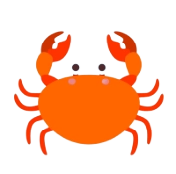




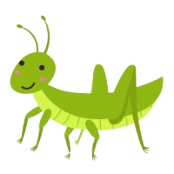

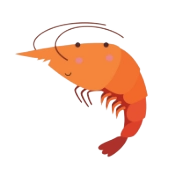


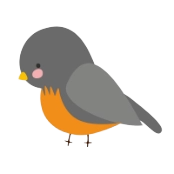



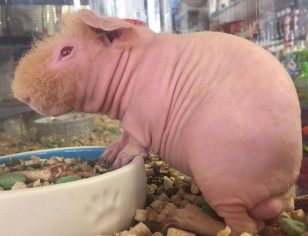
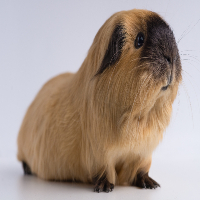
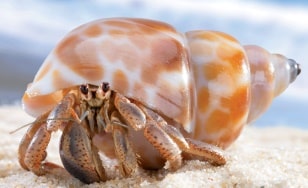
 Point
Point